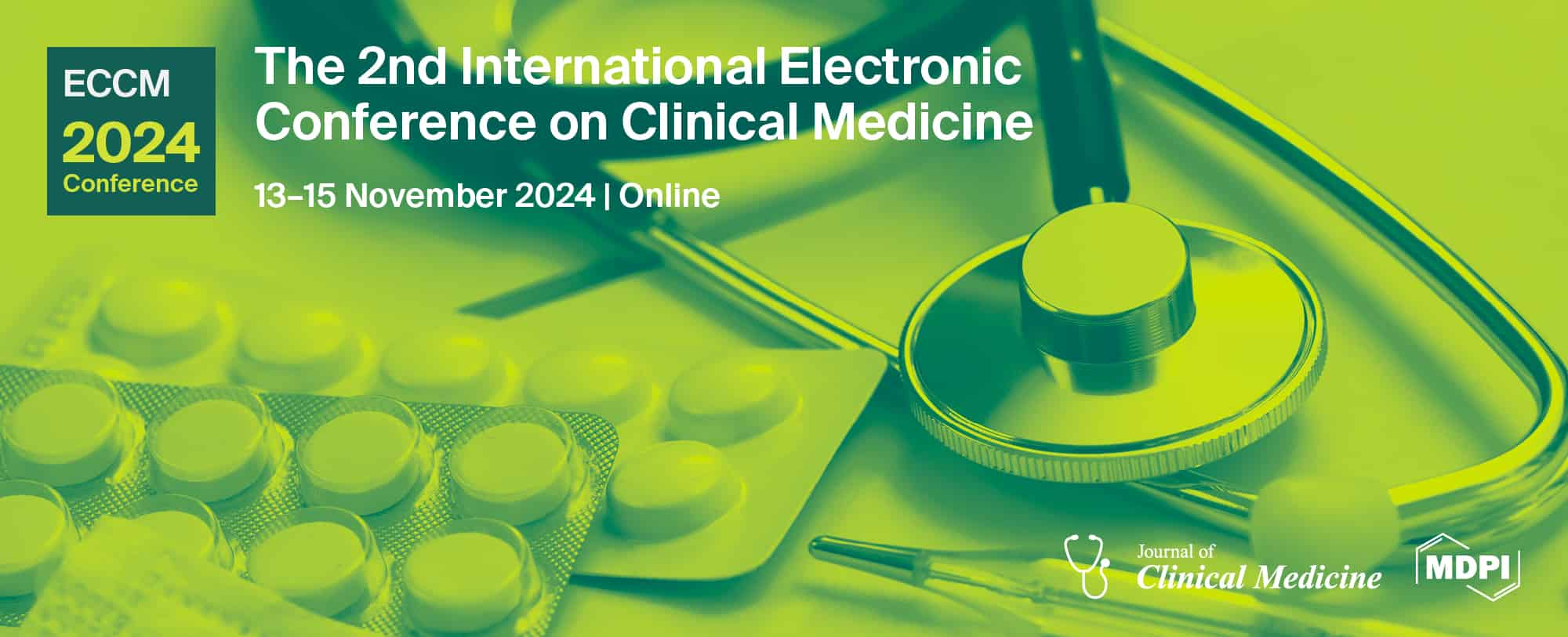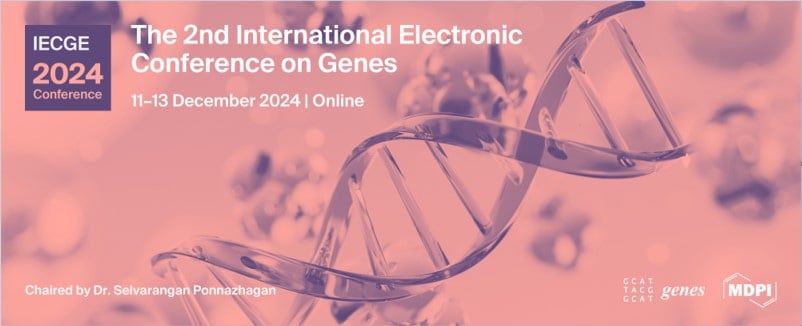Journal Description
Brain Sciences
Brain Sciences
is an international, peer-reviewed, open access journal on neuroscience published monthly online by MDPI.
- Open Access— free for readers, with article processing charges (APC) paid by authors or their institutions.
- High Visibility: indexed within Scopus, SCIE (Web of Science), PubMed, PMC, Embase, PSYNDEX, CAPlus / SciFinder, and other databases.
- Rapid Publication: manuscripts are peer-reviewed and a first decision is provided to authors approximately 15.6 days after submission; acceptance to publication is undertaken in 2.5 days (median values for papers published in this journal in the second half of 2023).
- Recognition of Reviewers: reviewers who provide timely, thorough peer-review reports receive vouchers entitling them to a discount on the APC of their next publication in any MDPI journal, in appreciation of the work done.
Impact Factor:
3.3 (2022);
5-Year Impact Factor:
3.4 (2022)
Latest Articles
Calm Contact Technique Based on the Endocrinological Mechanism of Hypnosis—A Theoretical Proposal
Brain Sci. 2024, 14(1), 83; https://doi.org/10.3390/brainsci14010083 - 15 Jan 2024
Abstract
This paper proposes the “calm contact” technique: an imaginative scenario where someone is in gentle contact with a loved one where the essence of the experience is to enjoy safety and calmness in peaceful social contact. The theoretical background is outlined by combining
[...] Read more.
This paper proposes the “calm contact” technique: an imaginative scenario where someone is in gentle contact with a loved one where the essence of the experience is to enjoy safety and calmness in peaceful social contact. The theoretical background is outlined by combining the brain mechanisms of stress reactions and hypnosis. In addition to the ancient stress responses (flight or fight or freeze), there are oxytocin-based options at the human level: tend and befriend behavior and the state of calm and connection, which is not a stress reaction but a resting reaction. These social-based reactions could prevent the organism from the primitive freezing response. Some studies proved that “hypnosis” as a setting reduces cortisol levels and could raise oxytocin levels. The beneficial mechanisms of the “calm contact” technique are analyzed in relation to “social support” and the psychoaffective effects of central oxytocin. The subjective effects of the proposed technique are outlined based on reports of healthy volunteers. The “calm contact” technique could be an alternative or adjunct to the “safe place” technique, applying the recent findings of endocrinological brain mechanisms of hypnosis. Clinical implications and limitations are briefly summarized.
Full article
(This article belongs to the Special Issue Brain Mechanism of Hypnosis)
Open AccessArticle
Polymersomes for Sustained Delivery of a Chalcone Derivative Targeting Glioblastoma Cells
by
, , , , , , , , , and
Brain Sci. 2024, 14(1), 82; https://doi.org/10.3390/brainsci14010082 - 14 Jan 2024
Abstract
Glioblastoma (GBM) is a primary malignant tumor of the central nervous system responsible for the most deaths among patients with primary brain tumors. Current therapies for GBM are not effective, with the average survival of GBM patients after diagnosis being limited to a
[...] Read more.
Glioblastoma (GBM) is a primary malignant tumor of the central nervous system responsible for the most deaths among patients with primary brain tumors. Current therapies for GBM are not effective, with the average survival of GBM patients after diagnosis being limited to a few months. Chemotherapy is difficult in this case due to the heterogeneity of GBM and the high efficacy of the blood–brain barrier, which makes drug absorption into the brain extremely difficult. In a previous study, 3′,4′,3,4,5-trimethoxychalcone (MB) showed antiproliferative and anti-invasion activities toward GBM cells. Polymersomes (PMs) are an attractive, new type of nanoparticle for drug administration, due to their high stability, enhanced circulation time, biodegradability, and sustained drug release. In the present study, different MB formulations, PEG2000-PCL and PEG5000-PCL, were synthesized, characterized, and compared in terms of 14-day stability and in vitro cytotoxicity (hCMEC/D3 and U-373 MG).
Full article
(This article belongs to the Special Issue Advances in the Development of New Drugs and Treatment Targets for Brain Cancers)
►▼
Show Figures

Figure 1
Open AccessArticle
Analysis of Cortico-Muscular Coupling and Functional Brain Network under Different Standing Balance Paradigms
by
and
Brain Sci. 2024, 14(1), 81; https://doi.org/10.3390/brainsci14010081 - 13 Jan 2024
Abstract
Maintaining standing balance is essential for people to engage in productive activities in daily life. However, the process of interaction between the cortex and the muscles during balance regulation is understudied. Four balance paradigms of different difficulty were designed by closing eyes and
[...] Read more.
Maintaining standing balance is essential for people to engage in productive activities in daily life. However, the process of interaction between the cortex and the muscles during balance regulation is understudied. Four balance paradigms of different difficulty were designed by closing eyes and laying sponge pad under feet. Ten healthy subjects were recruited to stand for ten 15 s trials in each paradigm. This study used simultaneously acquired electroencephalography (EEG) and electromyography (EMG) to investigate changes in the human cortico-muscular coupling relationship and functional brain network characteristics during balance control. The coherence and causality of EEG and EMG signals were calculated by magnitude-squared coherence (MSC) and transfer entropy (TE). It was found that changes in balance strategies may lead to a shift in cortico-muscular coherence (CMC) from the beta band to the gamma band when the difficulty of balance increased. As subjects performed the four standing balance paradigms, the causality of the beta band and the gamma band was stronger in the descending neural pathway than that in the ascending neural pathway. A multi-rhythmic functional brain network with 19 EEG channels was constructed and analyzed based on graph theory, showing that its topology also changed with changes in balance difficulty. These results show an active adjustment of the sensorimotor system under different balance paradigms and provide new insights into the endogenous physiological mechanisms underlying the control of standing balance.
Full article
(This article belongs to the Special Issue Research on Executive Functions by EEG and fMRI)
►▼
Show Figures
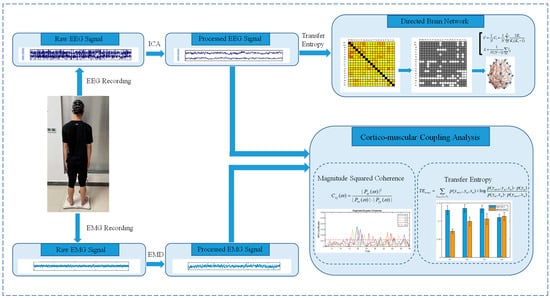
Figure 1
Open AccessReview
Minimal Clinically Important Difference of Scales Reported in Stroke Trials: A Review
by
, , , , and
Brain Sci. 2024, 14(1), 80; https://doi.org/10.3390/brainsci14010080 - 13 Jan 2024
Abstract
There is a growing awareness of the significance of using minimum clinically important differences (MCIDs) in stroke research. An MCID is the smallest change in an outcome measure that is considered clinically meaningful. This review is the first to provide a comprehensive summary
[...] Read more.
There is a growing awareness of the significance of using minimum clinically important differences (MCIDs) in stroke research. An MCID is the smallest change in an outcome measure that is considered clinically meaningful. This review is the first to provide a comprehensive summary of various scales and patient-reported outcome measures (PROMs) used in stroke research and their MCID values reported in the literature, including a concise overview of the concept of and methods for determining MCIDs in stroke research. Despite the controversies and limitations surrounding the estimation of MCIDs, their importance in modern clinical trials cannot be overstated. Anchor-based and distribution-based methods are recommended for estimating MCIDs, with patient self-evaluation being a crucial component in capturing the patient’s perspective on their health. A combination of methods can provide a more comprehensive understanding of the clinical relevance of treatment effects, and incorporating the patient’s perspective can enhance the care of stroke patients.
Full article
(This article belongs to the Section Neurorehabilitation)
►▼
Show Figures

Figure 1
Open AccessCase Report
Tic Cough in an Adolescent with Organic Brain Pathology—A Case Report and Literature Review
Brain Sci. 2024, 14(1), 79; https://doi.org/10.3390/brainsci14010079 - 13 Jan 2024
Abstract
Chronic cough in children and adolescents can be troublesome both to the patient and the whole family. The most common causes of chronic cough in children are protracted bacterial bronchitis and bronchial asthma. However, differential diagnostic workup and treatment can become complicated when
[...] Read more.
Chronic cough in children and adolescents can be troublesome both to the patient and the whole family. The most common causes of chronic cough in children are protracted bacterial bronchitis and bronchial asthma. However, differential diagnostic workup and treatment can become complicated when a cough of different etiology is encountered, especially in a child having a complex medical history for an unrelated pathology. A cough lacking any identified somatic cause and response to medical treatment in combination with core clinical features of tics that include suppressibility, distractibility, suggestibility, variability, and the presence of a premonitory sensation is labeled tic cough. Here we discuss a case of an adolescent who had atrophy of the corpus callosum and a history of ventriculoperitoneal shunting due to hydrocephalus caused by stenosis of the sylvian aqueduct, but now presented with a debilitating dry cough lasting for several months. After physical causes of cough were ruled out, the diagnosis of tic cough was reached, and multidisciplinary treatment ensured complete recovery. To the best of our knowledge, this is the first reported case showing coincidence of tic cough and hydrocephalus. The co-occurrence of non-syndromic corpus callosum atrophy and tic cough might hypothetically suggest a predisposing pathogenetic link via reduced signaling through cortical inhibitory neurons; further studies are needed. The importance of careful assessment of medical history, clinical picture, and features of the cough itself are emphasized in order to reach the correct diagnosis. Increased awareness of medical society is mandatory to recognize tic cough and to distinguish it from the neurologic manifestations of organic brain pathology.
Full article
(This article belongs to the Special Issue Anxious Brain: Stress Influence on the Nervous System)
►▼
Show Figures
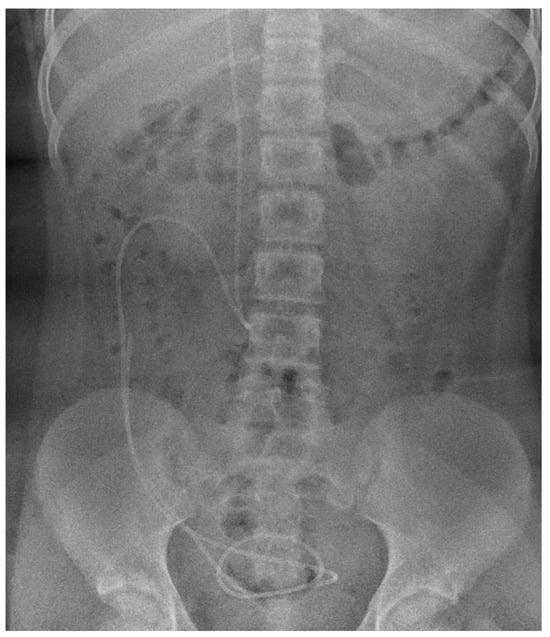
Figure 1
Open AccessArticle
Exploring the Interplay of Working Memory, Apathy, and Mood/Emotional Factors
by
, , , , and
Brain Sci. 2024, 14(1), 78; https://doi.org/10.3390/brainsci14010078 - 12 Jan 2024
Abstract
Background: Previous investigations on healthy humans showed conflicting evidence regarding the impact of mood on working memory performance. A systematic investigation of how mood affects apathy levels in healthy participants is currently missing. Methods: We administered a visuospatial (VS) and a numerical (N)
[...] Read more.
Background: Previous investigations on healthy humans showed conflicting evidence regarding the impact of mood on working memory performance. A systematic investigation of how mood affects apathy levels in healthy participants is currently missing. Methods: We administered a visuospatial (VS) and a numerical (N) n-back task to a sample of 120 healthy individuals. In these participants, using a series of questionnaires, we also evaluated apathy, mood, working memory, perceived stress, PTSD symptoms caused by the COVID-19 pandemic outbreak, and general psychiatric symptoms. Successively, we investigated their performance in the n-back task as a function of scores to these questionnaires. Results: Participants performed better in the N block than in the VS one. Their accuracy decreased as a function of the n-back difficulty. We reported no differences in working memory performance or apathy as a function of mood, stress, or PTSD symptoms. We found that phobic anxiety negatively predicted accuracy to the numerical n-back task and that subjects with greater anxiety and difficulty in regulating emotions also showed higher levels of withdrawal from the task. Conclusion: The study’s results suggest that while mood did not significantly affect working memory performance, strong associations were found between WMQ scores and working memory capabilities.
Full article
(This article belongs to the Special Issue Executive Functioning Development—Measurements and Promotion in Naturalistic Setups)
►▼
Show Figures

Figure 1
Open AccessOpinion
Adaptation of the Concept of Brain Reserve for the Prediction of Stroke Outcome: Proxies, Neural Mechanisms, and Significance for Research
Brain Sci. 2024, 14(1), 77; https://doi.org/10.3390/brainsci14010077 - 12 Jan 2024
Abstract
The prediction of stroke outcome is challenging due to the high inter-individual variability in stroke patients. We recently suggested the adaptation of the concept of brain reserve (BR) to improve the prediction of stroke outcome. This concept was initially developed alongside the one
[...] Read more.
The prediction of stroke outcome is challenging due to the high inter-individual variability in stroke patients. We recently suggested the adaptation of the concept of brain reserve (BR) to improve the prediction of stroke outcome. This concept was initially developed alongside the one for the cognitive reserve for neurodegeneration and forms a valuable theoretical framework to capture high inter-individual variability in stroke patients. In the present work, we suggest and discuss (i) BR-proxies—quantitative brain characteristics at the time stroke occurs (e.g., brain volume, hippocampus volume), and (ii) proxies of brain pathology reducing BR (e.g., brain atrophy, severity of white matter hyperintensities), parameters easily available from a routine MRI examination that might improve the prediction of stroke outcome. Though the influence of these parameters on stroke outcome has been partly reported individually, their independent and combined impact is yet to be determined. Conceptually, BR is a continuous measure determining the amount of brain structure available to mitigate and compensate for stroke damage, thus reflecting individual differences in neural resources and a capacity to maintain performance and recover after stroke. We suggest that stroke outcome might be defined as an interaction between BR at the time stroke occurs and lesion load. BR in stroke can potentially be influenced, e.g., by modifying cardiovascular risk factors. In addition to the potential power of the BR concept in a mechanistic understanding of inter-individual variability in stroke outcome and establishing individualized therapeutic approaches, it might help to strengthen the synergy of preventive measures in stroke, neurodegeneration, and healthy aging.
Full article
(This article belongs to the Section Behavioral Neuroscience)
►▼
Show Figures

Figure 1
Open AccessBrief Report
Unveiling Neurocognitive Disparities in Encoding and Retrieval between Paper and Digital Tablet-Based Learning
by
, , , , , , and
Brain Sci. 2024, 14(1), 76; https://doi.org/10.3390/brainsci14010076 - 12 Jan 2024
Abstract
The widespread use of mobile devices and laptops has replaced traditional paper-based learning and the question of how the brain efficiency of digital tablet-based learning differs from that of paper-based learning remains unclear. The purpose of this study was to investigate the difference
[...] Read more.
The widespread use of mobile devices and laptops has replaced traditional paper-based learning and the question of how the brain efficiency of digital tablet-based learning differs from that of paper-based learning remains unclear. The purpose of this study was to investigate the difference in brain efficiency for learning between paper-based and digital tablet-based learning by measuring activity in the prefrontal cortex (PFC) using functional near-infrared spectroscopy. Thirty-two subjects were randomly assigned to the paper-based learning or the digital tablet-based learning group. Subjects in each group performed a memory task that required memorizing a three-minute novel (encoding phase) on a paper or digital tablet, followed by a test in which they answered four multiple-choice questions based on the novel’s content. To compare both groups, behavioral performance on the test (retrieval phase) and activity in the PFC were measured. As a result, no significant difference in behavioral performance between both groups was observed (p > 0.05). However, the paper-based learning group showed significantly lower activity in the PFC in the encoding phase than the digital tablet-based learning group (p < 0.05) but not in the retrieval phase. The current study demonstrated that brain efficiency in encoding is higher in subjects with paper-based learning than those with digital tablet-based learning. This finding has important implications for education, particularly in terms of the pros and cons of electronic document-based learning.
Full article
(This article belongs to the Special Issue At the Frontiers of Neurorehabilitation: Series II)
Open AccessSystematic Review
Localization of Vestibular Cortex Using Electrical Cortical Stimulation: A Systematic Literature Review
by
, , , and
Brain Sci. 2024, 14(1), 75; https://doi.org/10.3390/brainsci14010075 - 11 Jan 2024
Abstract
The vestibular system plays a fundamental role in body orientation, posture control, and spatial and body motion perception, as well as in gaze and eye movements. We aimed to review the current knowledge regarding the location of the cortical and subcortical areas, implicated
[...] Read more.
The vestibular system plays a fundamental role in body orientation, posture control, and spatial and body motion perception, as well as in gaze and eye movements. We aimed to review the current knowledge regarding the location of the cortical and subcortical areas, implicated in the processing of vestibular stimuli. The search was performed in PubMed and Scopus. We focused on studies reporting on vestibular manifestations after electrical cortical stimulation. A total of 16 studies were finally included. Two main types of vestibular responses were elicited, including vertigo and perception of body movement. The latter could be either rotatory or translational. Electrical stimulation of the temporal structures elicited mainly vertigo, while stimulation of the parietal lobe was associated with perceptions of body movement. Stimulation of the occipital lobe produced vertigo with visual manifestations. There was evidence that the vestibular responses became more robust with increasing current intensity. Low-frequency stimulation proved to be more effective than high-frequency in eliciting vestibular responses. Numerous non-vestibular responses were recorded after stimulation of the vestibular cortex, including somatosensory, viscero-sensory, and emotional manifestations. Newer imaging modalities such as functional MRI (fMRI), Positron Emission Tomography (PET), SPECT, and near infra-red spectroscopy (NIRS) can provide useful information regarding localization of the vestibular cortex.
Full article
(This article belongs to the Section Neurotology and Neuro-ophthalmology)
►▼
Show Figures

Figure 1
Open AccessArticle
Does 20 Hz Transcranial Alternating Current Stimulation over the Human Primary Motor Cortex Modulate Beta Rebound Following Voluntary Movement?
by
, , , , , , , , and
Brain Sci. 2024, 14(1), 74; https://doi.org/10.3390/brainsci14010074 - 11 Jan 2024
Abstract
Beta frequency oscillations originating from the primary motor cortex increase in amplitude following the initiation of voluntary movement, a process termed beta rebound. The strength of beta rebound has been reported to predict the recovery of motor function following stroke, suggesting therapeutic applications
[...] Read more.
Beta frequency oscillations originating from the primary motor cortex increase in amplitude following the initiation of voluntary movement, a process termed beta rebound. The strength of beta rebound has been reported to predict the recovery of motor function following stroke, suggesting therapeutic applications of beta rebound modulation. The present study examined the effect of 20 Hz transcranial alternating current stimulation (tACS) on the beta rebound induced by self-paced voluntary movement. Electroencephalograms (EEGs) and electromyograms (EMGs) were recorded from 16 healthy adults during voluntary movements performed before and after active or sham tACS. There was no significant change in average beta rebound after active tACS. However, the beta rebound amplitude was significantly enhanced in a subset of participants, and the magnitude of the increase across all participants was negatively correlated with the difference between individual peak beta frequency and tACS frequency. Thus, matching the stimulus frequency of tACS with individual beta frequency may facilitate therapeutic enhancement for motor rehabilitation.
Full article
(This article belongs to the Special Issue At the Frontiers of Neurorehabilitation: Series II)
►▼
Show Figures

Figure 1
Open AccessPerspective
Artificial Intelligence’s Transformative Role in Illuminating Brain Function in Long COVID Patients Using PET/FDG
Brain Sci. 2024, 14(1), 73; https://doi.org/10.3390/brainsci14010073 - 10 Jan 2024
Abstract
Cutting-edge brain imaging techniques, particularly positron emission tomography with Fluorodeoxyglucose (PET/FDG), are being used in conjunction with Artificial Intelligence (AI) to shed light on the neurological symptoms associated with Long COVID. AI, particularly deep learning algorithms such as convolutional neural networks (CNN) and
[...] Read more.
Cutting-edge brain imaging techniques, particularly positron emission tomography with Fluorodeoxyglucose (PET/FDG), are being used in conjunction with Artificial Intelligence (AI) to shed light on the neurological symptoms associated with Long COVID. AI, particularly deep learning algorithms such as convolutional neural networks (CNN) and generative adversarial networks (GAN), plays a transformative role in analyzing PET scans, identifying subtle metabolic changes, and offering a more comprehensive understanding of Long COVID’s impact on the brain. It aids in early detection of abnormal brain metabolism patterns, enabling personalized treatment plans. Moreover, AI assists in predicting the progression of neurological symptoms, refining patient care, and accelerating Long COVID research. It can uncover new insights, identify biomarkers, and streamline drug discovery. Additionally, the application of AI extends to non-invasive brain stimulation techniques, such as transcranial direct current stimulation (tDCS), which have shown promise in alleviating Long COVID symptoms. AI can optimize treatment protocols by analyzing neuroimaging data, predicting individual responses, and automating adjustments in real time. While the potential benefits are vast, ethical considerations and data privacy must be rigorously addressed. The synergy of AI and PET scans in Long COVID research offers hope in understanding and mitigating the complexities of this condition.
Full article
(This article belongs to the Special Issue Advances of AI in Neuroimaging)
►▼
Show Figures

Figure 1
Open AccessReview
Being in Virtual Reality and Its Influence on Brain Health—An Overview of Benefits, Limitations and Prospects
Brain Sci. 2024, 14(1), 72; https://doi.org/10.3390/brainsci14010072 - 10 Jan 2024
Abstract
Background: Dynamic technological development and its enormous impact on modern societies are posing new challenges for 21st-century neuroscience. A special place is occupied by technologies based on virtual reality (VR). VR tools have already played a significant role in both basic and clinical
[...] Read more.
Background: Dynamic technological development and its enormous impact on modern societies are posing new challenges for 21st-century neuroscience. A special place is occupied by technologies based on virtual reality (VR). VR tools have already played a significant role in both basic and clinical neuroscience due to their high accuracy, sensitivity and specificity and, above all, high ecological value. Objective: Being in a digital world affects the functioning of the body as a whole and its individual systems. The data obtained so far, both from experimental and modeling studies, as well as (clinical) observations, indicate their great and promising potential, but apart from the benefits, there are also losses and negative consequences for users. Methods: This review was conducted according to the PRISMA (Preferred Reporting Items for Systematic Reviews and Meta-Analyses) framework across electronic databases (such as Web of Science Core Collection; PubMed; and Scopus, Taylor & Francis Online and Wiley Online Library) to identify beneficial effects and applications, as well as adverse impacts, especially on brain health in human neuroscience. Results: More than half of these articles were published within the last five years and represent state-of-the-art approaches and results (e.g., 54.7% in Web of Sciences and 63.4% in PubMed), with review papers accounting for approximately 16%. The results show that in addition to proposed novel devices and systems, various methods or procedures for testing, validation and standardization are presented (about 1% of articles). Also included are virtual developers and experts, (bio)(neuro)informatics specialists, neuroscientists and medical professionals. Conclusions: VR environments allow for expanding the field of research on perception and cognitive and motor imagery, both in healthy and patient populations. In this context, research on neuroplasticity phenomena, including mirror neuron networks and the effects of applied virtual (mirror) tasks and training, is of interest in virtual prevention and neurogeriatrics, especially in neurotherapy and neurorehabilitation in basic/clinical and digital neuroscience.
Full article
(This article belongs to the Special Issue Perception, Motor Imagery, and Action in Real Research and Virtual Environments)
►▼
Show Figures
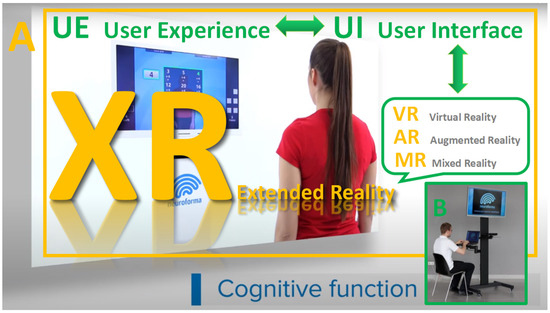
Figure 1
Open AccessReview
Pathophysiology to Risk Factor and Therapeutics to Treatment Strategies on Epilepsy
by
, , , , , , , , and
Brain Sci. 2024, 14(1), 71; https://doi.org/10.3390/brainsci14010071 - 10 Jan 2024
Abstract
Epilepsy represents a condition in which abnormal neuronal discharges or the hyperexcitability of neurons occur with synchronicity, presenting a significant public health challenge. Prognostic factors, such as etiology, electroencephalogram (EEG) abnormalities, the type and number of seizures before treatment, as well as the
[...] Read more.
Epilepsy represents a condition in which abnormal neuronal discharges or the hyperexcitability of neurons occur with synchronicity, presenting a significant public health challenge. Prognostic factors, such as etiology, electroencephalogram (EEG) abnormalities, the type and number of seizures before treatment, as well as the initial unsatisfactory effects of medications, are important considerations. Although there are several third-generation antiepileptic drugs currently available, their multiple side effects can negatively affect patient quality of life. The inheritance and etiology of epilepsy are complex, involving multiple underlying genetic and epigenetic mechanisms. Different neurotransmitters play crucial roles in maintaining the normal physiology of different neurons. Dysregulations in neurotransmission, due to abnormal transmitter levels or changes in their receptors, can result in seizures. In this review, we address the roles played by various neurotransmitters and their receptors in the pathophysiology of epilepsy. Furthermore, we extensively explore the neurological mechanisms involved in the development and progression of epilepsy, along with its risk factors. Furthermore, we highlight the new therapeutic targets, along with pharmacological and non-pharmacological strategies currently employed in the treatment of epileptic syndromes, including drug interventions employed in clinical trials related to epilepsy.
Full article
(This article belongs to the Special Issue Recent Advances in Pathophysiology and Therapeutic Approaches in Epilepsy)
►▼
Show Figures
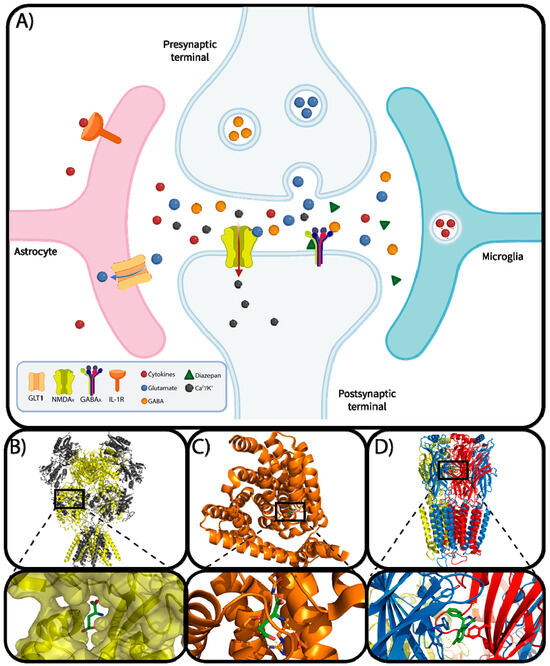
Figure 1
Open AccessArticle
A Naturalistic Intervention to Promote Executive Functions in Primary School Children: A Pilot Study
Brain Sci. 2024, 14(1), 70; https://doi.org/10.3390/brainsci14010070 - 10 Jan 2024
Abstract
Executive functions are related to the control of cognition, emotion, and behavior. They are essential to lifelong outcomes, including school performance. Naturalistic interventions embedded in children’s daily activities and environments have greater effects. Therefore, this pilot study aimed to develop a naturalistic program
[...] Read more.
Executive functions are related to the control of cognition, emotion, and behavior. They are essential to lifelong outcomes, including school performance. Naturalistic interventions embedded in children’s daily activities and environments have greater effects. Therefore, this pilot study aimed to develop a naturalistic program suitable for schools, based on Goal Management Training (GMT), and to analyze its effects on executive functions and behavior. The participants consisted of 35 students from 2nd to 5th grade with executive dysfunction complaints. They underwent neuropsychological assessments of working memory, inhibition, cognitive flexibility, and intellectual capacity. Teachers and parents answered questionnaires on executive functions and behavior. Students were randomly assigned to an active control group, who participated in sessions on citizenship, and an experimental group (EG), stimulated through the executive function program, both with 16 sessions conducted by psychologists. After the intervention, all participants were reevaluated. The two-way Wald-type statistic (WTS) revealed greater improvement in executive functions for the EG, including working memory and inhibition. Additionally, parents and teachers, blind to the experimental conditions, reported improvements in some measures of executive functions and behavior. The results are encouraging, but further studies should test the intervention when implemented with larger samples and by teachers.
Full article
(This article belongs to the Special Issue Executive Functioning Development—Measurements and Promotion in Naturalistic Setups)
►▼
Show Figures
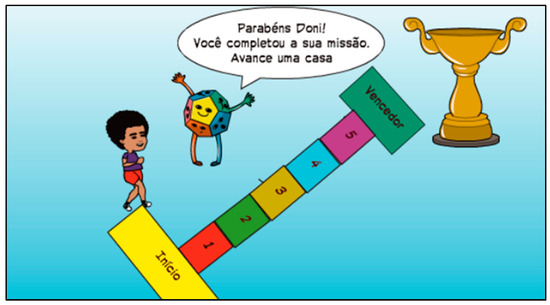
Figure 1
Open AccessArticle
Neurocognitive Assessment of Mathematics-Related Capacities in Neurosurgical Patients
by
, , , , , , and
Brain Sci. 2024, 14(1), 69; https://doi.org/10.3390/brainsci14010069 - 10 Jan 2024
Abstract
A precise neuropsychological assessment is of the utmost importance for neurosurgical patients undergoing the surgical excision of cerebral lesions. The assessment of mathematical abilities is usually limited to arithmetical operations while other fundamental visuo-spatial aspects closely linked to mathematics proficiency, such as the
[...] Read more.
A precise neuropsychological assessment is of the utmost importance for neurosurgical patients undergoing the surgical excision of cerebral lesions. The assessment of mathematical abilities is usually limited to arithmetical operations while other fundamental visuo-spatial aspects closely linked to mathematics proficiency, such as the perception of numerical quantities and geometrical reasoning, are completely neglected. We evaluated these abilities with two objective and reproducible psychophysical tests, measuring numerosity perception and non-symbolic geometry, respectively. We tested sixteen neuro-oncological patients before the operation and six after the operation with classical neuropsychological tests and with two psychophysical tests. The scores of the classical neuropsychological tests were very heterogeneous, possibly due to the distinct location and histology of the tumors that might have spared (or not) brain areas subserving these abilities or allowed for plastic reorganization. Performance in the two non-symbolic tests reflected, on average, the presumed functional role of the lesioned areas, with participants with parietal and frontal lesions performing worse on these tests than patients with occipital and temporal lesions. Single-case analyses not only revealed some interesting exceptions to the group-level results (e.g., patients with parietal lesions performing well in the numerosity test), but also indicated that performance in the two tests was independent of non-verbal reasoning and visuo-spatial working memory. Our results highlight the importance of assessing non-symbolic numerical and geometrical abilities to complement typical neuropsychological batteries. However, they also suggest an avoidance of reliance on an excessively rigid localizationist approach when evaluating the neuropsychological profile of oncological patients.
Full article
(This article belongs to the Section Neuropsychology)
►▼
Show Figures

Figure 1
Open AccessFeature PaperArticle
Assessment and Training of Perceptual-Motor Function: Performance of College Wrestlers Associated with History of Concussion
by
, , , , , and
Brain Sci. 2024, 14(1), 68; https://doi.org/10.3390/brainsci14010068 - 10 Jan 2024
Abstract
Concussion may affect sport performance capabilities related to the visual perception of environmental events, rapid decision-making, and the generation of effective movement responses. Immersive virtual reality (VR) offers a means to quantify, and potentially enhance, the speed, accuracy, and consistency of responses generated
[...] Read more.
Concussion may affect sport performance capabilities related to the visual perception of environmental events, rapid decision-making, and the generation of effective movement responses. Immersive virtual reality (VR) offers a means to quantify, and potentially enhance, the speed, accuracy, and consistency of responses generated by integrated neural processes. A cohort of 24 NCAA Division I male wrestlers completed VR assessments before and after a 3-week VR training program designed to improve their perceptual-motor performance. Prior to training, the intra-individual variability (IIV) among 40 successive task trials for perceptual latency (i.e., time elapsed between visual stimulus presentation and the initiation of movement response) demonstrated strong discrimination between 10 wrestlers who self-reported a history of concussion from 14 wrestlers who denied ever having sustained a concussion (Area Under Curve ≥ 0.750 for neck, arm, and step movements). Natural log transformation improved the distribution normality of the IIV values for both perceptual latency and response time (i.e., time elapsed between visual stimulus presentation and the completion of movement response). The repeated measures ANOVA results demonstrated statistically significant (p < 0.05) pre- and post-training differences between groups for the IIV in perceptual latency and the IIV in response time for neck, arm, and step movements. Five of the six IIV metrics demonstrated a statistically significant magnitude of change for both groups, with large effect sizes. We conclude that a VR assessment can detect impairments in perceptual-motor performance among college wrestlers with a history of concussion. Although significant post-training group differences were evident, VR training can yield significant performance improvements in both groups.
Full article
(This article belongs to the Special Issue The Contribution of Cognitive Training on Sport and Physical Performance, and Vice Versa)
►▼
Show Figures
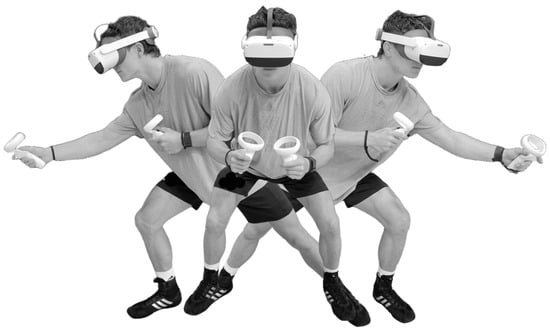
Figure 1
Open AccessReview
Neuralgic Amyotrophy and Hourglass Nerve Constriction/Nerve Torsion: Two Sides of the Same Coin? A Clinical Review
by
, , , , and
Brain Sci. 2024, 14(1), 67; https://doi.org/10.3390/brainsci14010067 - 10 Jan 2024
Abstract
Neuralgic amyotrophy, also called Parsonage–Turner syndrome, in its classic presentation is a brachial plexopathy or a multifocal neuropathy, involving mainly motor nerves of the upper limb with a monophasic course. Recently, a new radiological entity was described, the hourglass constriction, which is characterized
[...] Read more.
Neuralgic amyotrophy, also called Parsonage–Turner syndrome, in its classic presentation is a brachial plexopathy or a multifocal neuropathy, involving mainly motor nerves of the upper limb with a monophasic course. Recently, a new radiological entity was described, the hourglass constriction, which is characterized by a very focal constriction of a nerve, or part of it, usually associated with nerve thickening proximally and distally to the constriction. Another condition, which is similar from a radiological point of view to hourglass constriction, is nerve torsion. The pathophysiology of neuralgic amyotrophy, hourglass constriction and nerve torsion is still poorly understood, and a generic role of inflammation is proposed for all these conditions. It is now widely accepted that nerve imaging is necessary in identifying hourglass constrictions/nerve torsion pre-surgically in patients with an acute mononeuropathy/plexopathy. Ultrasound and MRI are useful tools for diagnosis, and they are consistent with intraoperative findings. The prognosis is generally favorable after surgery, with a high rate of good motor recovery.
Full article
(This article belongs to the Section Neuromuscular and Movement Disorders)
►▼
Show Figures

Figure 1
Open AccessSystematic Review
Transcranial Direct Current Stimulation for Orthopedic Pain: A Systematic Review with Meta-Analysis
Brain Sci. 2024, 14(1), 66; https://doi.org/10.3390/brainsci14010066 - 09 Jan 2024
Abstract
(1) Background: Transcranial direct current stimulation (tDCS) appears to alleviate chronic pain via a brain-down mechanism. Although several review studies have examined the effects of tDCS on patients with chronic pain, no systematic review or meta-analysis has comprehensively analyzed the effects of tDCS
[...] Read more.
(1) Background: Transcranial direct current stimulation (tDCS) appears to alleviate chronic pain via a brain-down mechanism. Although several review studies have examined the effects of tDCS on patients with chronic pain, no systematic review or meta-analysis has comprehensively analyzed the effects of tDCS on chronic orthopedic joint pain in one study. We aim to evaluate the effectiveness of tDCS for pain reduction in chronic orthopedic patients; (2) Methods: A comprehensive search of five electronic databases (Medline, Embase, Web of Science, CINAHL, and Cochrane) was performed. Only randomized controlled trials that compared tDCS with a control intervention were included. Eighteen studies met our inclusion criteria. We identified four categories of chronic orthopedic pain: knee (k = 8), lower back (k = 7), shoulder (k = 2), and orofacial pain (k = 1). Random effect models were utilized, and a sensitivity analysis was conducted in the presence of significant heterogeneity. Studies within each pain condition were further classified according to the number of treatment sessions: 1–5 sessions, 6–10 sessions, and >10 sessions.; (3) Results: Significant reductions in chronic orthopedic joint pain were observed following tDCS compared to controls for knee (g = 0.59, p = 0.005), lower back (g = 1.14, p = 0.005), and shoulder (g = 1.17, p = 0.020). Subgroup analyses showed pain reductions after 6–10 tDCS sessions for knee pain and after 1–5 and >10 sessions for lower back pain; (4) Conclusions: tDCS could be considered a potential stand-alone or supplemental therapy for chronic knee and lower back pain. The effectiveness of tDCS treatment varies depending on the number of treatment sessions. Our findings suggest the importance of implementing individualized treatment plans when considering tDCS for chronic pain conditions.
Full article
(This article belongs to the Special Issue Chronic Pain: Assessment, Diagnosis, and Management)
►▼
Show Figures
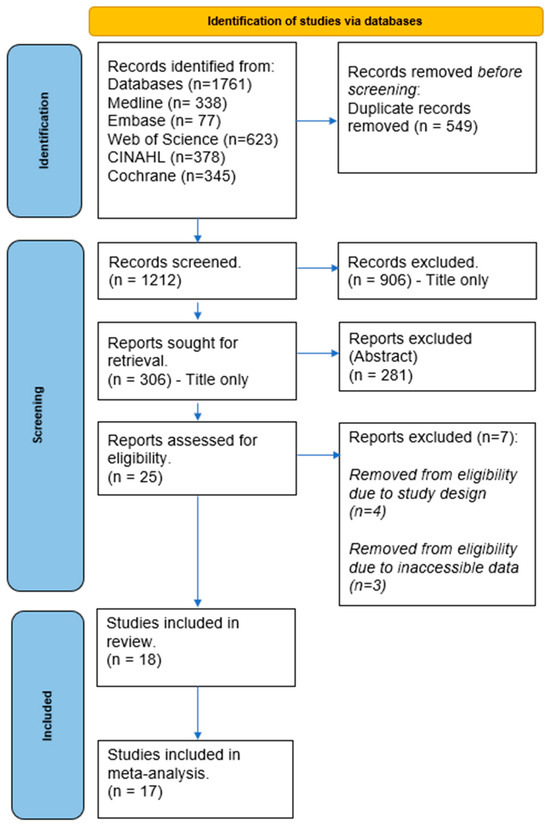
Figure 1
Open AccessArticle
Age-Related Differences in Motor Skill Transfer with Brief Memory Reactivation
Brain Sci. 2024, 14(1), 65; https://doi.org/10.3390/brainsci14010065 - 09 Jan 2024
Abstract
Motor memories can be strengthened through online practice and offline consolidation. Offline consolidation involves the stabilization of memory traces in post-practice periods. Following initial consolidation of a motor memory, subsequent practice of the motor skill can lead to reactivation and reconsolidation of the
[...] Read more.
Motor memories can be strengthened through online practice and offline consolidation. Offline consolidation involves the stabilization of memory traces in post-practice periods. Following initial consolidation of a motor memory, subsequent practice of the motor skill can lead to reactivation and reconsolidation of the memory trace. The length of motor memory reactivation may influence motor learning outcomes; for example, brief, as opposed to long, practice of a previously learned motor skill appears to optimize intermanual transfer in healthy young adults. However, the influence of aging on reactivation-based motor learning has been scarcely explored. Here, the effects of brief and long motor memory reactivation schedules on the retention and intermanual transfer of a visuomotor tracing task are explored in healthy older adults. Forty older adults practiced a virtual star-tracing task either three (“brief reactivation”) or ten (“long reactivation”) times per session over a two-week period. Comparison with a previously reported group of younger adults revealed significant age-related differences in the effect of the motor memory reactivation schedule on the intermanual transfer of the motor task. In older adults, unlike younger adults, no significant between-group differences were found by practice condition in the speed, accuracy, or skill of intermanual task transfer. That is, motor task transfer in healthy younger, but not older, adults appears to benefit from brief memory reactivation. These results support the use of age-specific motor training approaches and may inform motor practice scheduling, with possible implications for physical rehabilitation, sport, and music.
Full article
(This article belongs to the Section Social Cognitive and Affective Neuroscience)
►▼
Show Figures

Figure 1
Open AccessArticle
Autistic Traits as Predictors of Increased Obsessive–Compulsive Disorder Severity: The Role of Inflexibility and Communication Impairment
by
, , , , , , , and
Brain Sci. 2024, 14(1), 64; https://doi.org/10.3390/brainsci14010064 - 09 Jan 2024
Abstract
Due to similar manifestations, some authors have proposed a potential correlation between autism spectrum disorder (ASD) and obsessive–compulsive disorder (OCD). This link has long been recognized and debated, with some authors arguing that these disorders frequently occur comorbid but distinct while others believe
[...] Read more.
Due to similar manifestations, some authors have proposed a potential correlation between autism spectrum disorder (ASD) and obsessive–compulsive disorder (OCD). This link has long been recognized and debated, with some authors arguing that these disorders frequently occur comorbid but distinct while others believe they are part of the same spectrum. The aim of our study was to explore the prevalence and correlates of autistic traits in 55 OCD patients and 55 matched controls and to assess possible autistic dimensions predictive of higher OCD symptoms. All participants were assessed with the Obsessive–Compulsive Spectrum-Short Version (OBS-SV) and the Adult Autism Subthreshold Spectrum (AdAS Spectrum). The OCD group scored significantly higher in both questionnaires. Total OBS-SV scores and domains were significantly correlated with all AdAS Spectrum domains and total score. The AdAS Spectrum total, Verbal Communication and Inflexibility and adherence to routine domain scores were significant positive predictors of higher OBS-SV scores. Lastly, when two clusters of subjects (high and low autism) were determined, Inflexibility and adherence to routine domain presented the greatest influence in forming the clusters. Our findings support the association between OCD and autistic traits in the adult population, supporting the hypothesis of a neurodevelopmental basis for these psychiatric conditions.
Full article
(This article belongs to the Section Psychiatric Diseases)
►▼
Show Figures

Figure 1

Journal Menu
► ▼ Journal Menu-
- Brain Sciences Home
- Aims & Scope
- Editorial Board
- Reviewer Board
- Topical Advisory Panel
- Instructions for Authors
- Special Issues
- Topics
- Sections & Collections
- Article Processing Charge
- Indexing & Archiving
- Editor’s Choice Articles
- Most Cited & Viewed
- Journal Statistics
- Journal History
- Journal Awards
- Society Collaborations
- Conferences
- Editorial Office
Journal Browser
► ▼ Journal BrowserHighly Accessed Articles
Latest Books
E-Mail Alert
News
Topics
Topic in
Brain Sciences, Cells, Diagnostics, IJMS, JCM, Pathogens, Pathophysiology
Applied Sciences and Technologies for Detection and Therapies of Pathologies in the Neuronal Environment
Topic Editors: Muh-Shi Lin, Hong Jiang, Yu-Yo SunDeadline: 29 February 2024
Topic in
Brain Sciences, Cancers, JCM, JVD, Neurology International
Inflammation in Neuro-Oncological Diseases and in Neuro-Vascular Diseases
Topic Editors: Erdem Güresir, Johannes Wach, Martin VychopenDeadline: 31 March 2024
Topic in
Brain Sciences, Healthcare, Informatics, IJERPH
Applications of Virtual Reality Technology in Rehabilitation
Topic Editors: Jorge Oliveira, Pedro GamitoDeadline: 30 June 2024
Topic in
Brain Sciences, Clinics and Practice, COVID, Life, Vaccines, Viruses
Multifaceted Efforts from Basic Research to Clinical Practice in Controlling COVID-19 Disease
Topic Editors: Yih-Horng Shiao, Rashi OjhaDeadline: 30 September 2024

Conferences
Special Issues
Special Issue in
Brain Sciences
New Advances in Alzheimer’s Disease and Other Associated Diseases
Guest Editors: Genaro G. Ortiz, Ramiro Ruiz-GarciaDeadline: 20 January 2024
Special Issue in
Brain Sciences
Human Brain Dynamics: Latest Advances and Prospects—2nd Edition
Guest Editor: Stavros I. DimitriadisDeadline: 31 January 2024
Special Issue in
Brain Sciences
State of the Art in Disorders of Consciousness
Guest Editors: Sergio Bagnato, Cristina Boccagni, Valeria PingueDeadline: 17 February 2024
Special Issue in
Brain Sciences
Current Research in ADHD among Adults
Guest Editors: Maria Strauß, Jue HuangDeadline: 29 February 2024
Topical Collections
Topical Collection in
Brain Sciences
Collection on Developmental Neuroscience
Collection Editor: Mark Burke
Topical Collection in
Brain Sciences
Systematic Reviews and Meta-Analyses Collection on Molecular and Cellular Neuroscience
Collection Editor: Andrew Clarkson
Topical Collection in
Brain Sciences
Primary Progressive Aphasia and Apraxia of Speech
Collection Editors: Jordi A. Matias-Guiu, Robert Jr Laforce, Rene L. Utianski
Topical Collection in
Brain Sciences
Human Ultrasound Neuromodulation: State of the Art
Collection Editor: Roland Beisteiner













